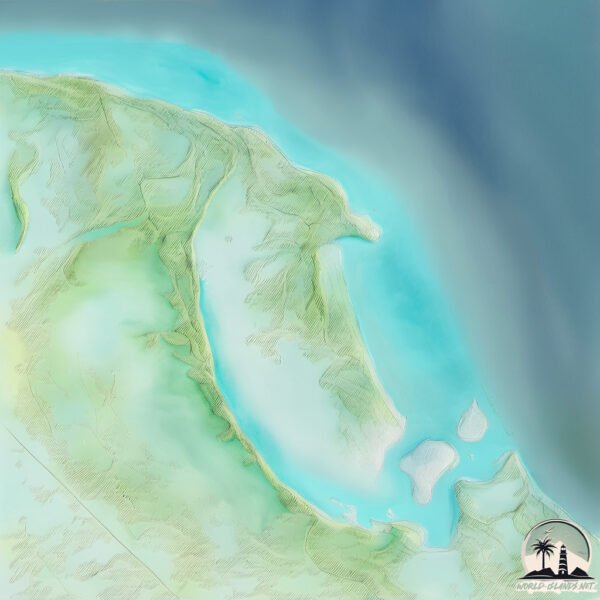North Caicos

Welcome to North Caicos, a Tropical island in the North Atlantic Ocean, part of the majestic Atlantic Ocean. This guide offers a comprehensive overview of what makes North Caicos unique – from its geography and climate to its population, infrastructure, and beyond. Dive into the details:
- Geography and Size: Explore the island’s size and location.
- Climate and Weather: Weather patterns and temperature.
- Topography and Nature: Uncover the natural wonders of the island.
- Infrastructure and Travelling: Insights on reaching, staying, and making the most of your visit.
Geography and size of North Caicos
Size: 13.899 km²
Coastline: 50.7 km
Ocean: Atlantic Ocean
Sea: North Atlantic Ocean
Continent: North America
North Caicos is a Medium Island spanning 13.9 km² with a coastline of 50.7 km.
Archipel: Bahama Islands – An archipelago in the Atlantic Ocean, known for their stunning beaches, coral reefs, and vibrant culture.
Tectonic Plate: North America – Covers North America and parts of the Atlantic and Arctic Oceans, characterized by diverse geological features and varying levels of seismic activity.
The geographic heart of the island is pinpointed at these coordinates:
Latitude: 21.90525709 / Longitude: -71.89068941
Climate and weather of North Caicos
Climate Zone: Tropical
Climate Details: Tropical Savanna, Wet
Temperature: Hot
Climate Characteristics: Defined by distinct wet and dry seasons with high temperatures year-round. Pronounced rainfall occurs during the wet season, while the dry season is marked by drought.
Topography and nature of North Caicos
Timezone: UTC-05:00
Timezone places: America/New_York
Max. Elevation: 5 m
Mean Elevation: 2 m
Vegetation: Open Woodland
Tree Coverage: 12%
The mean elevation is 2 m. The highest elevation on the island reaches approximately 5 meters above sea level. The island is characterized by Plains: Flat, low-lying lands characterized by a maximum elevation of up to 200 meters.
Dominating Vegetation: Open Woodland
Characterized by sparsely distributed trees with open canopy allowing sunlight to penetrate, supporting grasses and shrubs underneath. Often found in drier or transitional environments. North Caicos has a tree cover of 12 %.
Vegetation: 8 vegetation zones – Very Highly Diverse Island
This island is an ecological powerhouse, with a wide array of vegetation zones ranging from lush rainforests to arid scrublands. Its varied ecosystems contribute to a complex web of biodiversity.
Infrastructure and Travelling to North Caicos
The mean population of North Caicos is 5 per km². North Caicos is Gently Populated. The island belongs to United Kingdom.
United Kingdom is classified as Developed region: G7: Group of Seven – Major advanced economies, including Canada, France, Germany, Italy, Japan, the United Kingdom, and the United States. The level of income is High income: OECD.
Continuing your journey, is the next notable island, situated merely km away.
Ferry Ride from Providenciales to North Caicos in the Turks and Caicos Islands (Caribbean Cruisin)



Does the island have a public airport with scheduled flights? no.
There is no public and scheduled airport on North Caicos. The nearest airport is North Caicos Airport, located 3 km away.
Does the island have a major port? no.
There are no major ports on North Caicos. The closest major port is COCKBURN HARBOR, approximately 55 km away.
Please note: The data used here has been primarily extracted from satellite readings. Deviations from exact values may occur, particularly regarding population density, the height of elevations, land area, and coastline measurements. The latter refers to average values at mean high tide.
